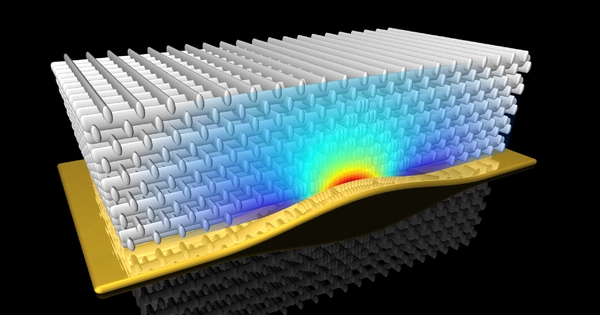A photonic metamaterial (PM), also known as an optical metamaterial, is a type of electromagnetic metamaterial that interacts with light at wavelengths ranging from terahertz (THz) to infrared (IR) to visible. The materials have a cellular, periodic structure. Photonic metamaterials are synthetic materials with optical properties that are not found in natural materials. They are composed of subwavelength-sized structures, typically on the nanometer scale, that are designed to manipulate light propagation. Nanolithography, self-assembly, and 3D printing are among the techniques used to create these materials.
Photonic metamaterials are distinguished from photonic band gap or photonic crystal structures by their subwavelength periodicity. The cells are magnitudes larger than an atom but much smaller than the radiated wavelength, on the order of nanometers.
The structure of photonic metamaterials, rather than their composition, determines their unique properties. It is possible to control how light interacts with the material by carefully designing the size, shape, and orientation of the subwavelength structures. Some photonic metamaterials, for example, can have negative refractive indices, which means they refract light in the opposite direction as a normal material.
Atoms determine the response to electric and magnetic fields, and thus to light, in a conventional material. In metamaterials, cells act as atoms in a homogeneous material at scales larger than the cells, resulting in an effective medium model. At high frequencies, some photonic metamaterials exhibit magnetism, resulting in strong magnetic coupling. In the optical range, this can result in a negative index of refraction.
Cloaking and transformation optics are two potential applications. Photonic crystals differ from PM in that their scattering elements are larger and more periodic, on the order of the wavelength. Furthermore, because a photonic crystal is not homogeneous, it is impossible to define values of ε (permittivity) or u (permeability).
Application
Photonic metamaterials have numerous potential applications, including imaging, sensing, and communications. They could, for example, be used to create superlenses capable of imaging objects at resolutions beyond the diffraction limit of conventional optics. They could also be used to create compact optical devices with high performance and low power consumption, such as waveguides and filters.
















